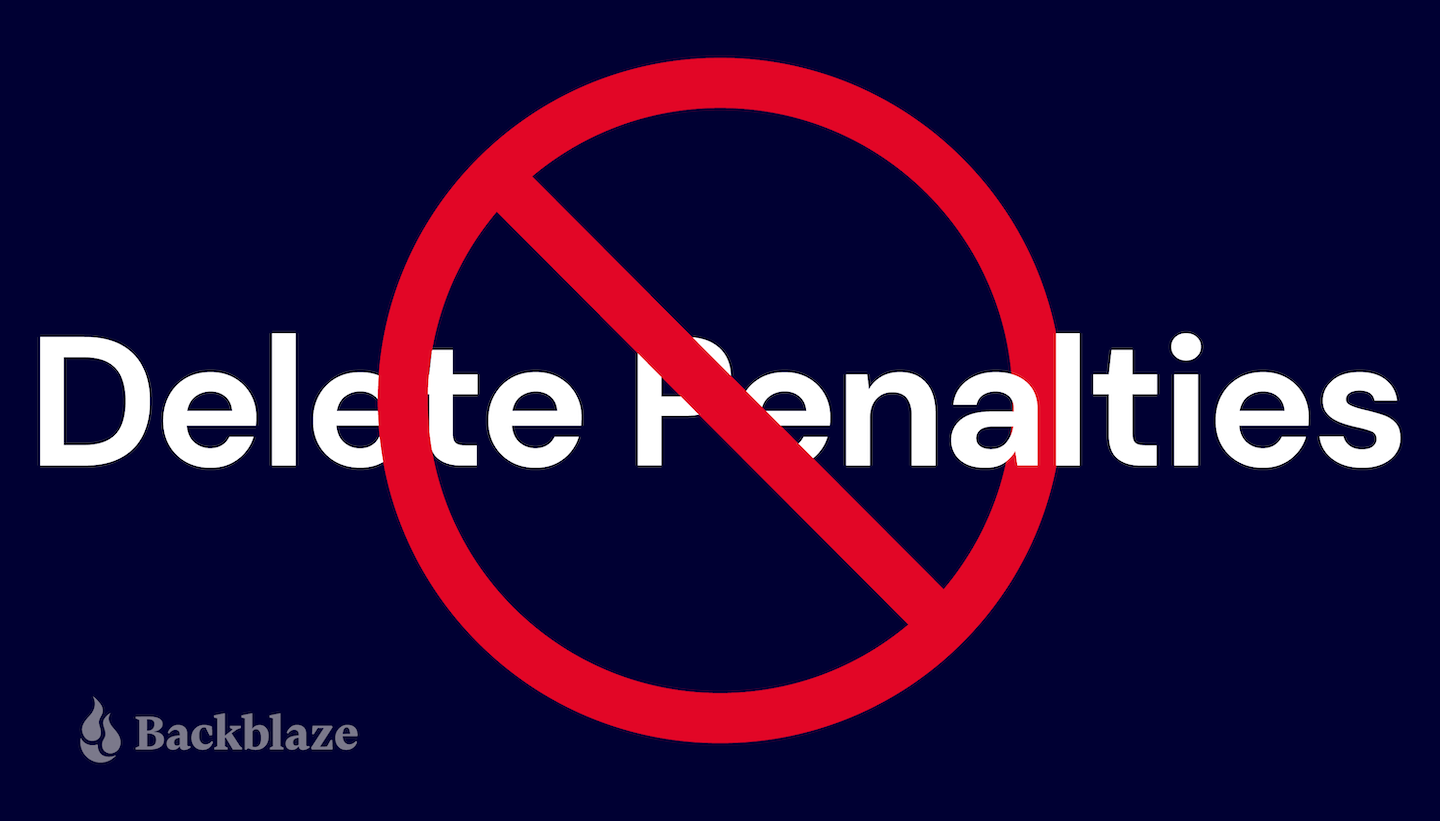
People often think of “retention” as a good thing when it comes to cloud and object storage—after all, the point of storing data is to retain it. But retention’s only a good thing when you actually want to retain data—that nuance is sometimes hidden from people, and yes, I say hidden intentionally.
A number of cloud storage providers from big to small are doing their best to hide the darker side of retention—retention minimums. They loudly promote attractive storage tier rates while making little mention of their data retention minimums that allow them to charge those rates for as many as 90 or 180 days after bytes uploaded have been deleted.
We don’t believe in charging you for data you deleted. Today, we’re explaining more about what that means for you, and highlighting some real-world stories of discovering these hidden fees.
Our Stance on Retention Minimums aka Delete Penalties
First, let’s call retention minimums what they really are: delete penalties. We stand against delete penalties. We don’t charge them. We see them as the enemy of every use case in which data is intentionally replaced or deprecated in hours, days, or weeks instead of months. Delete penalties go against agility and flexibility. We also think it’s despicable when a vendor shouts about how they don’t charge fees for things like data egress, while quietly padding their topline with hidden retention penalties.
At Backblaze, our pricing has nothing to hide. When you delete data, you stop paying for it within the hour. End of story.
Retention Minimums: The Fine Print or the Finer Print
Obviously, cloud providers aren’t going to advertise that they charge you for deleted data, but some are more transparent than others. AWS with its S3 Glacier services, for example, at least acknowledges these products are meant primarily for longer term storage. They disclose minimum retention details in the footnotes on their pricing page—the information is less prominent, but to their credit, it’s disclosed on the page. It may seem unusual for us to praise AWS, but by comparison, they’re actually a lesser evil in this regard.
Others? Let’s just say you really need a magnifying glass to dig through the fine print. Their minimum retention requirements are buried deep in their terms of service or FAQs. Unless you have an eagle eye and/or click through many pages of their website, you’re left to find out just how much you’re paying for deleted data when you get your bill. What’s more, the disappointment and disillusionment from budget surprises like that can turn people off from the many gains they can derive from leveraging cloud storage.
Delete Penalties in the Wild: Testimonials
Here’s what we’ve heard from folks who experienced delete penalties for themselves…
“Initially, I was worried about egress, so I went with [name redacted]. But I was misled. My egress was nominal. Meanwhile, I found that one-third or more of my bill was for backup I had deleted. That’s not how I want to do business.”
—MSP Leader
“I looked at an up-and-coming provider called [name redacted] because their whole thing is they’ve got great prices. I soured on them when I realized that they don’t really tell you that they bill you for a minimum of 90 days of object duration. There’s little I need to store for 90 days for my application. All of my cursory research seemed okay, and the pricing calculator on the pricing page made no mention of any of this. I’m not a fan of using a vendor that buries something that important.”
—Brian, Software Developer
“We got burned by [name redacted] with regard to their deletion and how we do our backups. I deleted data off their system, and they’re billing me for data they’re not storing? And what’s more, they’re irritated by the fact that their hard drives had to delete data? I don’t understand that level of…I’m not even going to say the word, but it’s just stupid.”
—Joe Valentine, Software Engineer II, Webjogger
Delete the Delete Penalties
To be sure, compared to the high costs of on-premises infrastructure, cloud storage delete penalties may go unnoticed or be characterized as a cost of saving money. But that’s exactly what companies who levy these penalties want you to think. Don’t let them misrepresent their true costs or mislead you. It’s not right. It’s not aligned with their messaging. It’s not what you deserve. And it’s not going to support your business growth especially when fees add up fast for many terabytes and petabytes.
It’s time to delete the delete penalties. Full stop.
If you’ve been hit with unexpected penalties after deleting data, share your experience below with the broader community or reach out to us to learn more about how you can eliminate them.




